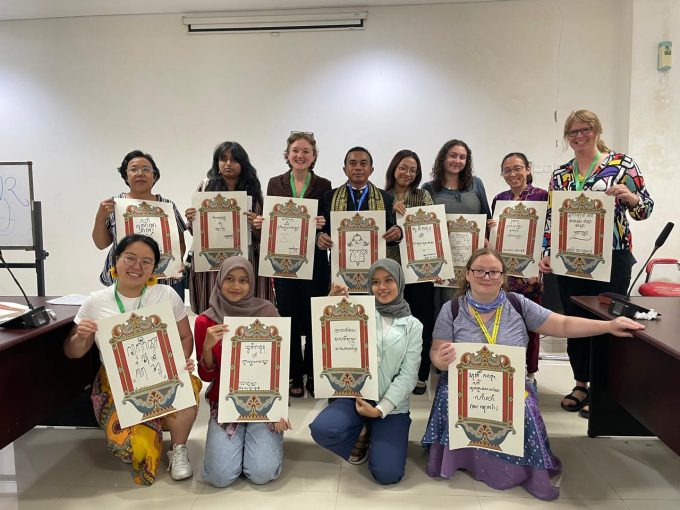
In many cultures, calligraphy is regarded as a medium that harmonizes the human spirit with the universe, creating a profound and meditative experience. This concept was brought to life during the Calligraphy Workshop held on Wednesday (10/7) at UGM’s Faculty of Philosophy, as part of the 2024 AAS-in-Asia Conference.
Conference participants, including academics from various countries, had the opportunity to practice Javanese, Arabic, Chinese, and Korean calligraphy in four separate classes, guided by renowned artists.
“It’s a delightful experience to engage in an activity like this amidst academic sessions,” said Megan, a participant from England who attended the Javanese calligraphy workshop.
The workshop featured four accomplished calligraphy artists: Kim Jang Hyun, a calligraphy artist from Korea; Kashif Khan, a Sufi calligraphy artist; Wahono Simbah, a Javanese calligraphy artist; and Mansheng Wang, a Chinese painter and calligrapher.
Each class accommodated around a dozen participants, depending on the room capacity. During the two-hour sessions, participants learned basic characters and brush techniques and created simple calligraphy pieces on specially prepared paper.
Through this hands-on experience, participants also explored the cultural values embedded in the art of calligraphy. “Calligraphy is a spiritual practice, something that helps us cultivate our inner selves. As we write one character at a time, each stroke contributes to our personal growth,” said Noman Baig, a lecturer from Habib University, Pakistan, who also served as a speaker during the discussion session.
According to Noman, calligraphy invites participants to appreciate beauty and celebrate universal human values. This sentiment was echoed by Mansheng Wang, who explained in his class how calligraphy can depict the beauty of nature, much like painting.
“Calligraphy and painting share the same roots. In the past, people understood calligraphy as a form of painting deeply inspired by nature,” he remarked.
The AAS-in-Asia Conference, running from July 9 to 11, brought together academics from around the world specializing in Asian studies. In addition to the calligraphy workshop, a gamelan workshop was held on Tuesday (9/7), also as part of the conference. These special sessions were designed to provide participants with unique cultural experiences alongside their academic discussions.
